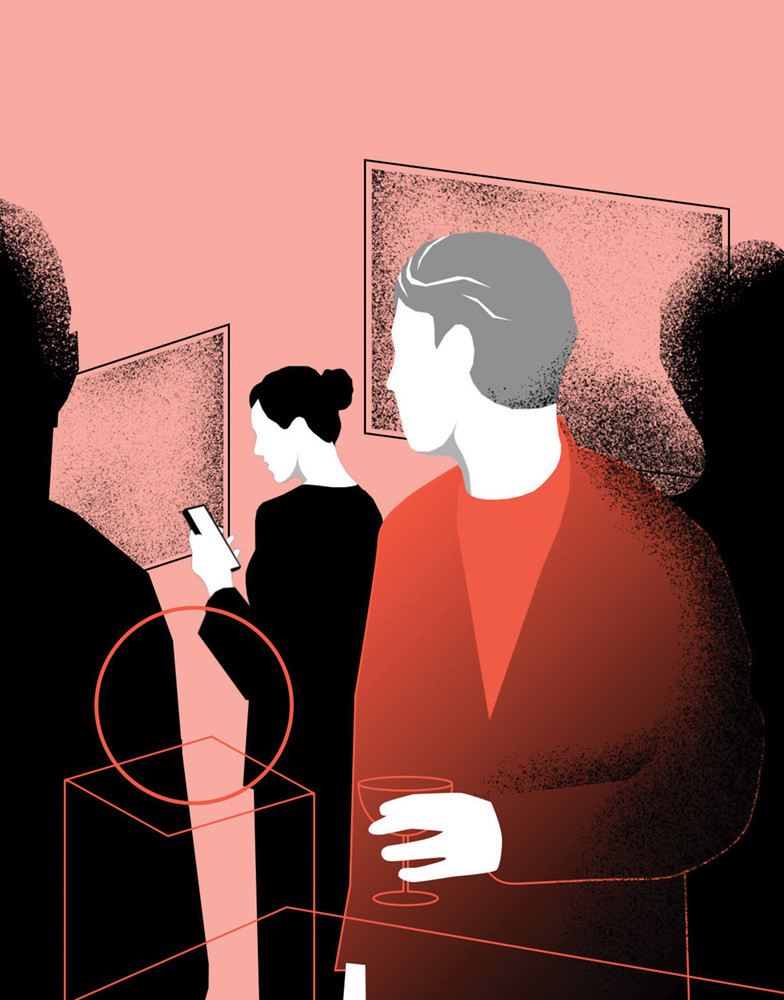[ad_1]
With a world in crisis and an art market spinning out of control, seasoned creative consultants bring hard truths to our readers.
At a recent gallery dinner the millennial artist seated next to me told me wild things about augmented reality and showed me TikTok on her phone. Wanting to learn more, I asked for a studio visit and immediately subscribed to her Instagram account to keep up with her energy. My assistant scheduled an appointment, but I had to cancel twice, once because of a registrar meeting, and once when a trustee tour ran over time. Long story short, the artist is now blocking me! I personally texted her and haven’t heard back for over a week. Her ideas could really sharpen the curatorial proposal I’m about to pitch, and it would also be nice to see her work if there’s time. Why would an unknown artist snub a curator and throw away this opportunity?
Millennials excel at hurting older people’s feelings by not liking their posts or replying to their texts. Perhaps the artist has been busy making a poetry zine or tattooing a friend. We sense that she is actually ghosting you, and for good reason, which is why we want to address her first.
Dear Artist, you are an inspiration to all whose patience and passion have been squandered by art-world time wasters. You didn’t fall prey or relinquish your thoughts to a clueless opportunist who will boost their career off your words and ideas. Curators are often living in their own augmented realities, and that is why they seem so unreal to the rest of us. You avoided a stone cold brain-picking, which is an all too common outcome of one-sided studio visits where an artist is fluffed in order to gain information and authenticity. It takes great courage and self-respect not to nibble on this tainted kibble.
Look, Curator, those VR goggles you wear are distorting your sense of self-importance. There are many truly great curators out there, but you sound like the eye-darting, trend chasing, microdosing type who always complains that artists are difficult. When you say “we should have a studio visit,” no one, not even you, believes it will happen. You rarely follow up on such empty offers and typically flake out at the last moment, leaving both the artist and your own integrity hanging. How many coffees can you have with a person before you finally leave them alone? Sometimes the only way for a smart young artist to seize a big opportunity is by canceling someone like you.
My partner and I are not getting any younger, which is why we recently met with an estate lawyer. We are excited about being able to substantially give back to the art community that has so enriched our lives. Where can we make a real difference with our financial support?
Though bittersweet, end-of-life planning can provide a lifeline for countless underfunded organizations whose herculean efforts will carry on your goodwill. You may want to consider endowing groups that serve as essential community hubs, such as Recess in Brooklyn, whose Assembly program assists youth caught in the throes of mass incarceration, or the Underground Museum in central Los Angeles, which presents a new model for a POC-run contemporary art center. Wide Rainbow and Sonic Arts for All are two examples of classroom programs that are pioneering new forms of arts education in New York’s underserved communities. Grassroots organizations like 8 Ball Community are vital to youth political activism, while nonprofits like Queer Art in New York and Creative Growth Art Center in Oakland, California, give visibility to systematically marginalized groups such as LGBTQ and disabled artists, respectively. These are a few game changers we admire, but there are plenty more remarkable organizations affecting radical change on shoestring budgets. In this new year, your heartfelt letter reminds us that giving is a lifelong commitment.
This article appears under the title “Brain Picking” in the January 2020 issue, p. 26.
[ad_2]
Source link


